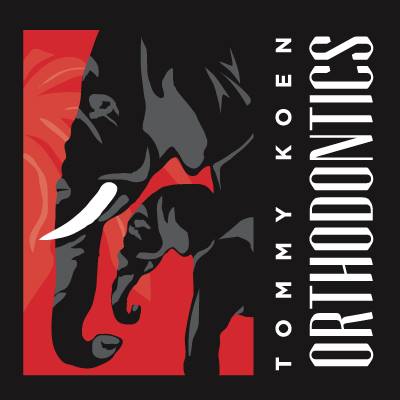How To Care For Braces?
Maintaining good oral health during your orthodontic treatment is an integral part of wearing braces. Many people don’t know that braces can trap food particles in hard-to-reach areas. If left unchecked, built-up food particles can quickly turn into harmful plaque.
Staying ahead of any bumps in the road requires knowing how to clean braces during your treatment. By adding some simple cleaning steps to your existing routine, you can ensure enduring results.
Learn more about how to care for braces by scheduling a complimentary consultation with Koen Orthodontics now!
How to Clean Braces?
Protecting your smile during treatment is essential for achieving stunning results with braces. Not following regular cleaning procedures can increase the likelihood of staining your teeth or harming your gums.
Cleaning your braces lets you experience benefits that will go above and beyond your treatment. Adding some extra cleaning steps to your existing routine will help you avoid short-term and long-term risks to your health.
Just about every day, we hear from people who want to know how to clean their braces. At Koen Orthodontics, we’re always happy to answer questions!
We have helped many people experience a more rewarding smile with braces. There are more options than ever before for braces treatment. Discover some of the incredible breakthroughs in orthodontic treatment now!
How to Brush Braces
Traditional metal braces are challenging to clean because food can get stuck in the appliance. The good news is: you only need to add a few new steps to your existing brushing routine.
Here’s how you can brush your braces:
- Use mouthwash or water to loosen any stray food particles.
- Next, gently brush your teeth using circular motions of your toothbrush. Keep your brush at a 45-degree angle around wires and brackets.
- Spend about thirty seconds in each part of your mouth. This way, the front, back, and top of each tooth are cleaned.
- Make sure you brush from the top to the bottom of each tooth for full coverage.
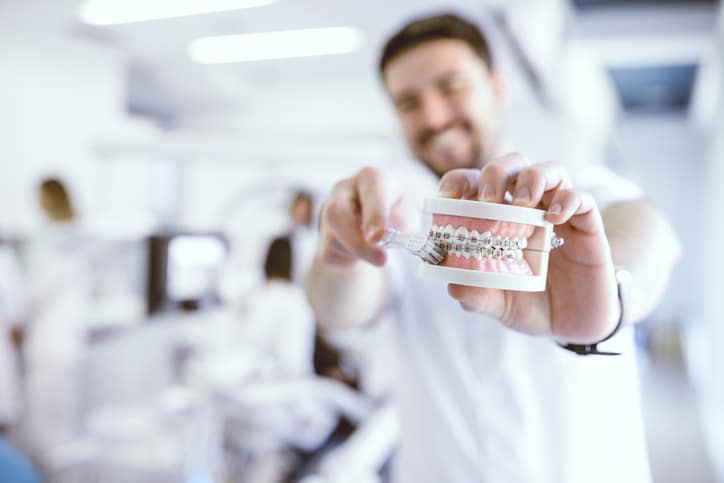
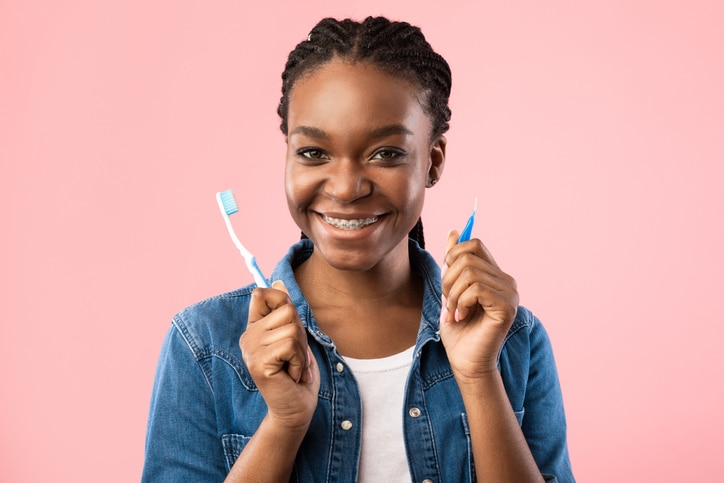
How to Brush With an Interdental Brush
An interdental brush is a useful tool for removing plaque from your appliance. These tools can reach into areas that normal brushes can’t.
Here’s how to use an interdental brush:
- Begin by gently sliding the brush into the spaces between your brackets.
- Use the brush to scrub up and down in between the brackets.
- Repeat these steps. Then rinse your mouth out with water after flossing. Keep in mind that many people enjoy using interdental brushes because they are easier to floss with than conventional floss. However, an interdental brush is not a replacement for flossing.
How to Floss With Braces
Traditional Flossing
Flossing is a gold standard for removing stuck food and debris. People with braces often think that their appliance will keep them from getting a great clean with flossing. However, you can still enjoy the benefits of flossing while wearing braces.
- Start by guiding the waxed floss under the wire, then gradually move the floss between your teeth.
- Secure the floss by looping it around your index fingers.
- Although you may want to hold the floss in a straight position, we recommend keeping it in a c-shape. This formation will help you clean your teeth without affecting the appliance.
- Repeat these steps until you have finished flossing.
Flossing with braces can take about 15 minutes, so make sure you are not under a time crunch.
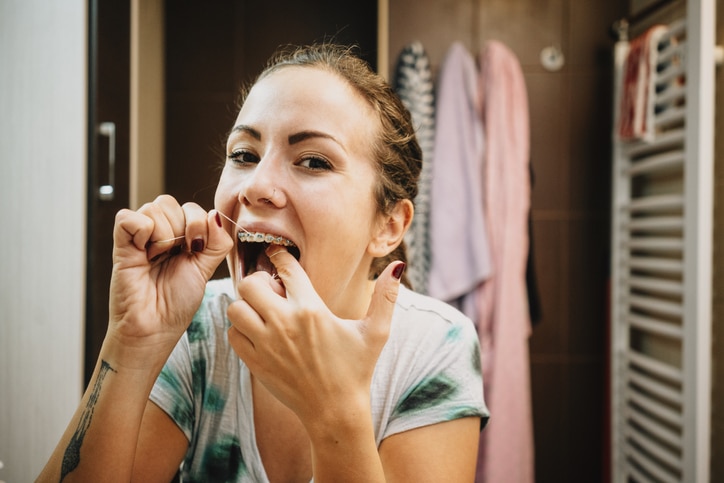
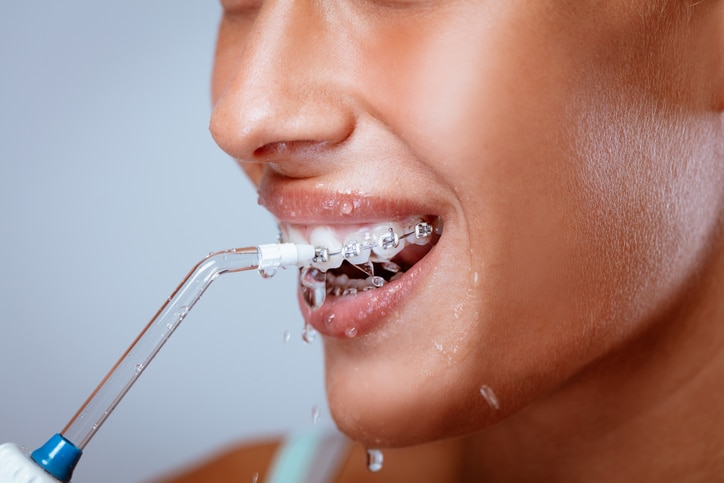
How to Floss With a Waterpik or Oral Irrigator
Some people use a Waterpik to clean between their teeth. These appliances produce a steady stream of water that can clean a mouth quicker than conventional flossing. You can even get specialized applicators for cleaning braces.
Flossing with a Waterpik:
- First, you will need to fill your machine’s water reservoir. Some people tip in mouthwash with their water, but this step is not necessary.
- Turn on the machine. Adjust the water pressure to a setting that feels comfortable.
- Place the applicator in your mouth and close your jaw. Closing your mouth will prevent any splashing or loose water.
- Aim the jets between each tooth and at your gum line. Make sure that you get the front and back of each tooth.
- Remove the unit from your mouth. Brush your teeth and repeat steps 3 and 4.
- Once you’re finished, empty the water and dry the applicator.
What Foods to Avoid With Braces
Maintaining your braces requires more than cleaning. During your treatment, you will need to make some slight changes in diet. These small changes will help you avoid emergency visits or increased treatment time.
Many of the foods to avoid with braces should come as no surprise. Junk food like hard candy, gum, chips, nuts, popcorn, taffy, or other sticky foods are risky because they damage teeth and destroy brackets.
Other foods to avoid with braces include:
- Crunchy foods like pretzels or thick pieces of bread.
- Coffee, wine, or pigmented beverages. The dark pigments in these foods can stain braces.
Schedule a Braces Care Appointment in Cookeville and Hendersonville
During your braces treatment, it is essential to do everything possible to safeguard your results. Manageable steps like flossing and cleaning throughout your treatment can help you lock in a lasting smile.
The experts at Koen Orthodontics can help you find the best path forward for your treatment. Our office is a family-friendly place to learn about taking care of your teeth. Learn more about how to take care of your braces during a complimentary consultation!
